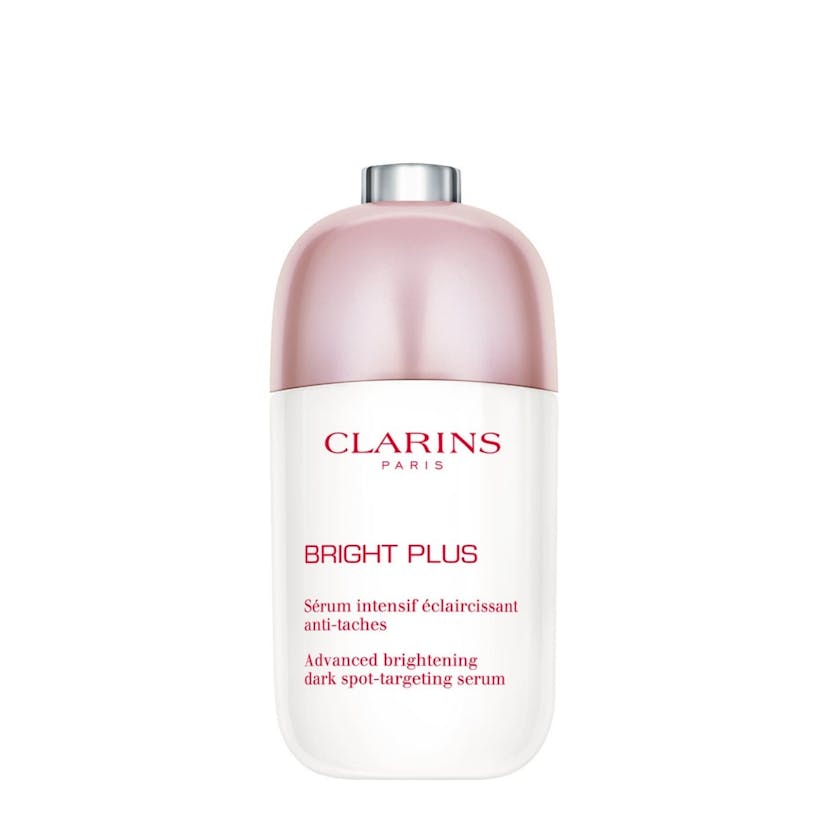The Common Sun-Damaged Skin Conditions, According To Experts
7 minutes read
Love the sun but hate sunburn? We hear you. And contrary to common belief, sunburn doesn’t just amount to the odd bit of redness and sore skin for a few days either. More than just a mere annoyance, prolonged sunburn can lead to a host of irreversible sun-damaged skin conditions, such as hyperpigmentation and actinic keratosis (i.e. scaly spots or patches on the top layer of skin – lovely…).
Happily, help is at hand. We’ve enlisted several experts to comment on the main sun-damaged skin conditions you need to be aware of, as well as ways to prevent and treat them with an expert-approved approach.
What is sun-damaged skin?
“Sun damage is what happens to the skin due to the effects of UV light, mainly sun,” explains Julie Brown, Certified Beauty Therapist and Founder of The Source Clinic.
Unprotected sun exposure is also the number one cause of premature skin ageing, so while you’re applying all those hardworking serums and moisturisers, they won’t count for much if you’re not shielding your skin from those dastardly UV rays at the same time.
“The sun does damage to our collagen fibres, so it plays a role in the loss of elasticity and fine lines and wrinkles,” Brown explains.
Aside from accelerated skin ageing such as lines and wrinkles, sun-damaged skin can also result in hyperpigmentation, age spots, actinic keratoses (also called solar keratoses), broken or dilated blood vessels, redness and uneven skin tone. Sun exposure can also trigger rosacea symptoms. So you have no excuse not to slather on that all-important SPF before you head outdoors – your skin will thank you for it!

What are the most common sun-damaged skin conditions?
1. Hyperpigmentation
A common bugbear that often affects those of us with melanin-rich skin, hyperpigmentation is any area of your skin that is darker than the rest. It occurs when melanin builds up under the skin and forms patches large enough to be seen on the skin’s surface.
What does hyperpigmentation look like?
Hyperpigmentation can manifest on the skin in the form of dark patches, dark circles, freckles, sunspots, or, more generally, uneven skin tone.
What are the main causes of hyperpigmentation?
While there are multiple causes that trigger hyperpigmentation, including pollution, trauma to the skin, (e.g., inflammation, acne or injury), hormonal imbalance and the general ageing process, unprotected and prolonged sun exposure is the number one culprit.
How do you get rid of hyperpigmentation?
Unfortunately, hyperpigmentation is tricky to reverse once it has occurred, but there are ways to minimise its appearance and protect yourself from further sun-damaged skin through skincare products and treatments.
1. Opt for prescription topical gels and creams
Darren Casey, US-based dermatologist, and CEO at Atlanta Dermatology, recommends to people suffering from hyperpigmentation and sunspots to use over-the-counter products with kojic acid and azelaic acid and/or hydroquinone to reduce pigmentation.
“Dermatologists can prescribe higher doses or combinations of azelaic and kojic acids with hydroquinone and or stronger retinoids such as tazarotene or retinoic acid,” he says. “In autumn and winter (when the sun’s rays are less strong), you can opt for chemical and cryogenic peels as well as lasers and IPL, which are all done in clinic.”
2. Use more vitamin C-infused skincare products
Guess what? Vitamin C isn’t just great for your diet – your skin loves it too! Vitamin C (also called L-ascorbic acid) is best known for treating and fading hyperpigmentation. The products from the Extra-Firming Range are all powered by a vitamin C derivative called acerola as its key ingredient. This is a plant alternative that is proven to target sunspots.

Bright Plus Advanced Dark Spot-Targeting Serum, £79 also has acerola fruit that can help fade away pigmentation.
Turmeric, an ingredient that often pops up in cooking, is abundant in vitamin C and is the hero ingredient in Double Serum, £80. Other studies have shown that curcumin, a chemical compound found in turmeric, can also decrease the effects of UV damage.
3. Fight hyperpigmentation through food
Several food groups have been shown to have a positive impact on the skin, which can sometimes prevent undesired skin colouration and pigmentation changes and promote a more even skin tone.
Gail Warren, Aesthetician and Nutritional Therapist, shares certain food groups to help and minimise pigmentation.
Carotenoids
“Found in dark green leafy greens such as spinach, kale, broccoli, and peas, they help filter UV radiation and minimise oxidative stress in the skin, resulting in less discolouration.”
Citrus fruits
“Oranges, lemons, and grapefruit, are rich in vitamin C – the master antioxidant and help to fight free radicals that will cause damage to the skin from UV overexposure.”
Almonds, Omega 3 And Vitamin E
“They are particularly healthy for your skin because they include magnesium, Omega 3 fatty acids, and Vitamin E, all of which help to lower stress hormones, which are shown to reduce skin pigmentation.”
Green tea
“Green tea is rich in antioxidants and flavonoids, which help reduce skin inflammation and melanin production in the skin.”
Healthy fats
“Oily fish, which are high in DHA, can also inhibit melanin production, which may reduce the risk of UV-induced hyperpigmentation.”
2. Actinic keratosis
As grim as it sounds, actinic keratosis, also referred to as solar keratoses, is the most common pre-cancerous skin condition caused by prolonged exposure to UV rays.
“Actinic keratosis is a precancerous lesion, which manifests as scaly rough pink or white patches,” says Casey. You don’t really want to have a case of this on your hands for too long, so here are the common signs to look out for and ways to treat it…
What does actinic keratosis look like?
The Skin Cancer Foundation describes actinic keratosis as commonly small dry, scaly, or crusty patches of skin. Actinic keratosis may be red, flesh-toned or a combination of colours and is sometimes raised. The skin often feels dry and rough to the touch, or raw, sensitive and painful, or even itchy with a burning sensation. It usually appears on sun-exposed areas of the face, like the lips, ears and scalp, as well as the shoulders, neck and the back of the hands and forearms.
Actinic keratosis treatments
“If untreated some cases of actinic keratosis lead to skin cancer. Clinicians treat them by freezing them or using other immunologic treatments,” Casey says.
But before you start playing doctor – put down that prescription pad! If you think you’re suffering from actinic keratosis, it’s best to see a dermatologist, who can accurately examine and diagnose your skin condition and recommend an effective treatment.
How to avoid damaging the skin from excessive sun
The best thing we can do to prevent sun-damaged skin? Avoid getting it the first place! While we can’t turn back time, prevention is better than cure, and it’s always a good idea to practice sun-safe habits. Here are two things to bear in mind…
1. Never skip applying a broad-spectrum sunscreen with SPF 30 or higher
One of the ways to prevent sun-damaged related skin conditions from worsening or, better still, from occurring in the first place, is by religiously applying SPF and staying out of direct sunlight.

The UV PLUS [5P] Anti-Pollution Translucent SPF 50 is our top pick. It not only protects your skin against the harmful UV rays but also common everyday pollutants, such as pollen, blue light, and city pollution. It comes in an easily absorbed gel cream that has a non-oily feel and glides like butter on the skin, keeping you protected.
Apply sunscreen 15 minutes before sun exposure. Reapply every two hours or after swimming, sweating, or drying off.
Read Next: SPF Benefits: Everything You Need To Know About Suncare
2. Wear sun protective clothing
Shielding yourself from those pesky UVs through protective clothing is one of the most effective ways to avoid sun damage. Dark or bright coloured clothing also keeps UV rays from reaching your skin by absorbing them rather than allowing them to penetrate.
The American Academy of Dermatology (AAD) recommends wearing a sun hat, so go find yourself a wide-brim and sport it with pride! While a baseball cap is better than nothing, wide-brimmed hats that surround the head offer the most protection.
Also try and seek shade between the hours of 11 am and 3 pm when the sun is at its strongest. (You can snooze under a sun umbrella if the beach is too tempting!)
3. The only good tan is a self-tan
When you want bronzed skin, the only safe way to do it is with self-tanner. You can even do it while pregnant, with certain precautions.
Read next:
How Beauty Daily staffers practice safe sun 365 days a year
The Best And Worst Beauty Products To Wear Under The Sun
Treatment For Wrinkles Above The Lip & How To Rejuvenate Your Mouth
Sign up for our newsletter
We will keep you in the loop for special offers, exclusive gifts and product news.

